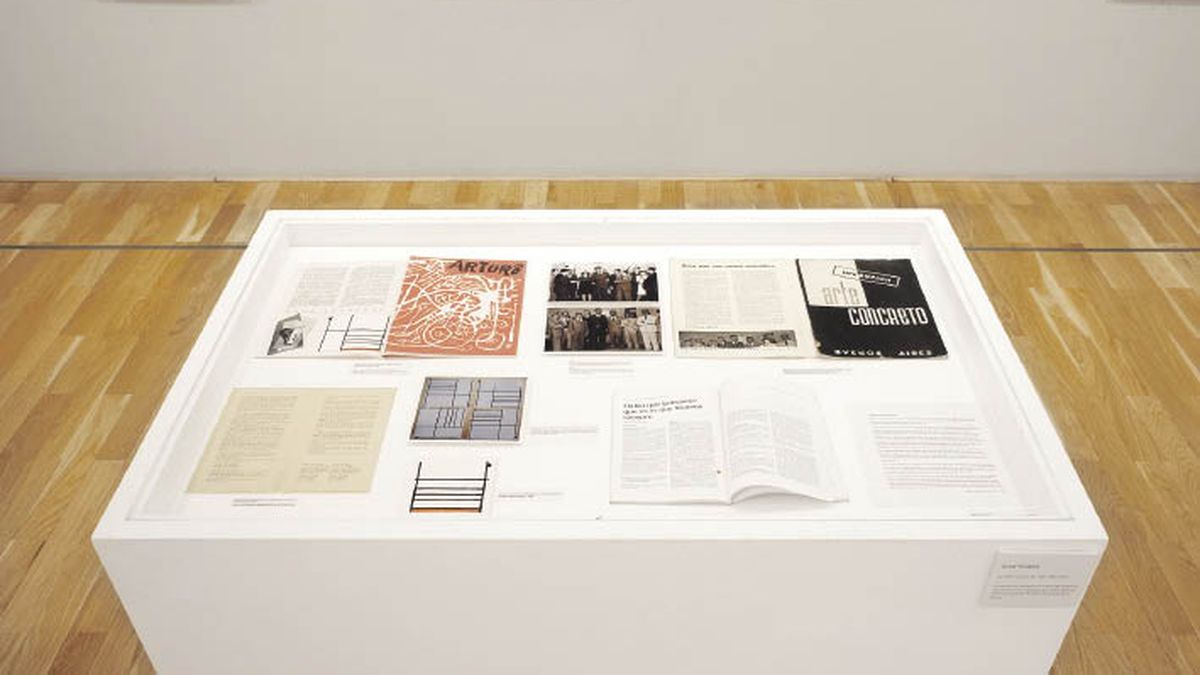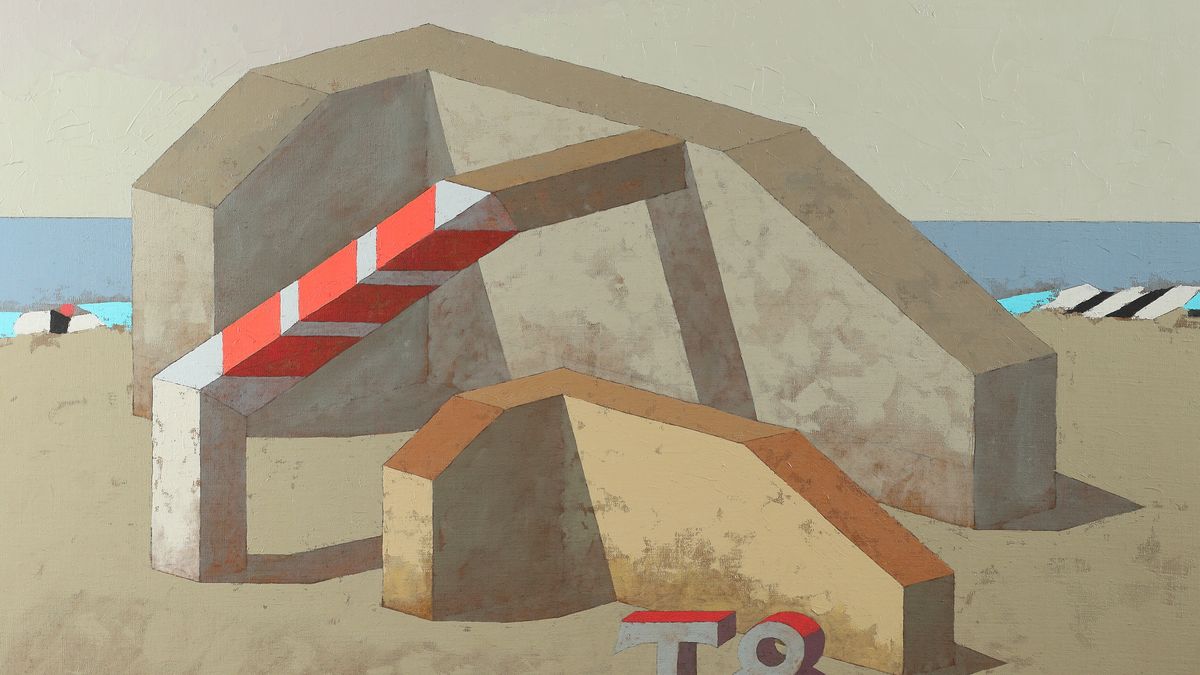Picabea’s project has no antecedents on the contemporary scene. In the room, in addition to the painting, there is a table with the elements gathered during the investigation. To begin with, the photograph taken by Marita García from the Lidy Prati archive and published in the facsimile edition of the magazine “Arturo” (Fundación Espigas, 2018). There you can see four loose prints of Mondrian’s “Composition en blanc, noir et rouge” that were pasted in the original magazine and were arranged randomly by García. The absence of red mobilizes Picabea’s visual memory. Then, there is an interview with Prati published in the magazine “Ramona”, entitled “I had to be erased: that’s what they always did”. Prati, who accompanied the group’s shows since 1942 and stopped painting when she got divorced, accounts for the predominance of her ideas among the concrete artists. He says that she discovered a work by Piet Mondrian in Art News, she told Maldonado that the Frenchman thought like them and asked him to include a reproduction in “Arturo”. “Sending printing (in color) was very expensive and we didn’t have enough money, so I passed the colorado one by one with tempera and Gyula Kosice passed him a queue”. In this way, she adds that in “Arturo” “there is nothing geometric, even that of Tomás Maldonado was more gestural, the only really concrete thing in the magazine was the reproduction of Mondrian that I wore.” She also contributed the vignettes and, in part, the financing. She adds that when they exhibited at the second São Paulo Biennial, it was the first time that the public in Brazil had seen geometric paintings and been asked what they meant. Prati recalled the Sistine Chapel and replied that, between “the arm of man and the arm of God, which are barely united, because they are not united, there was a point between that pretended union of two fingers of the hand of man and the hand of God. , then I answered that abstraction was that same feeling”. And she, without hesitation, explains the conceptual root of “Arturo”, which arose from the “need to publish something, but without having work, we had ideas, but there was no work. This is how the magazine ‘Arturo’ is more theoretical than plastic”.
Among the research papers are photographs of abstract artists. One of them, published under a text by Alfredo Hlito in the magazine “art concrete invention”, is a mystery. Picabea draws attention to the presence of the artist with the group and clarifies that it is due to a remarkable staging. Prati is glued on, expertly added after the original shot where she obviously wasn’t. How to explain the artist’s emphasis when, in the middle of the mentioned interview, she at 83 years old, she maintains, “I had to be erased, which is what they always did”?
When Maldonado settled in Europe in 1948, and began his remarkable career at the Ulm Higher School of Design, Prati produced his best works. But in 1952 they separated and in 1956, although she continued drawing, she abandoned painting.
Despite the fact that Prati stopped painting and that she was hospitalized at the beginning of the 1960s and in 1980 for psychiatric problems, her collective exhibitions succeed one another and her relationship with art continues. She was co-founder of the magazine “Artinf”, she designed, wrote art criticism and only left the environment when, due to economic problems, she held an administrative position in the Argentine Foreign Ministry. A year after her death, in 2009, Malba exhibited “Yente-Prati”. But, without a doubt, Argentine institutions owe their public a great retrospective.
Source: Ambito
David William is a talented author who has made a name for himself in the world of writing. He is a professional author who writes on a wide range of topics, from general interest to opinion news. David is currently working as a writer at 24 hours worlds where he brings his unique perspective and in-depth research to his articles, making them both informative and engaging.




